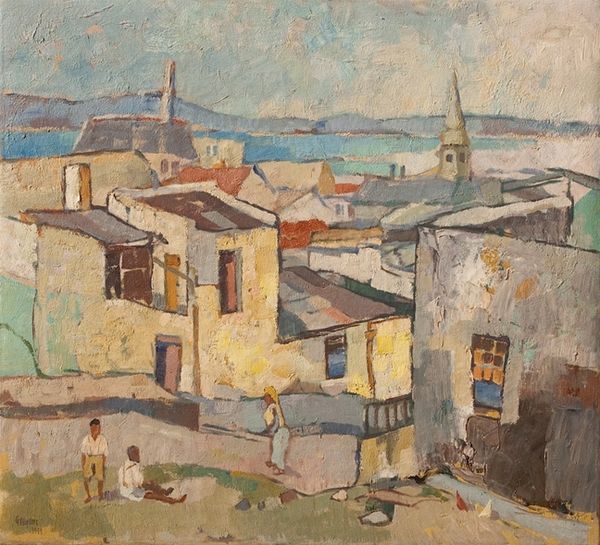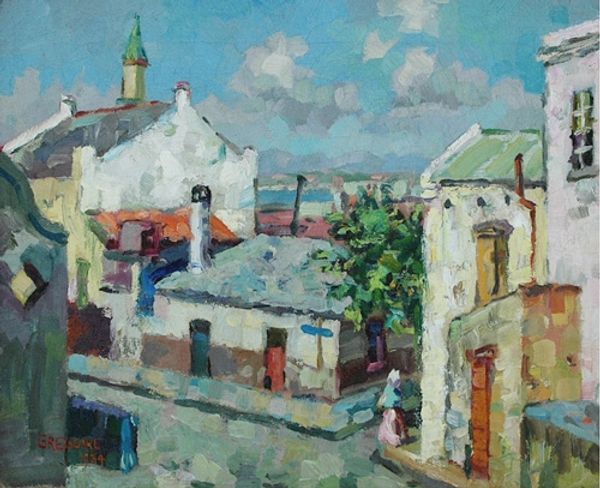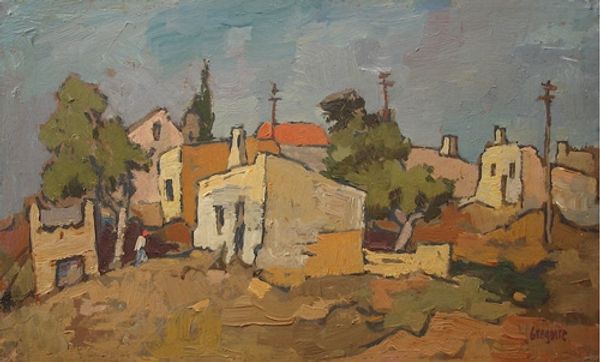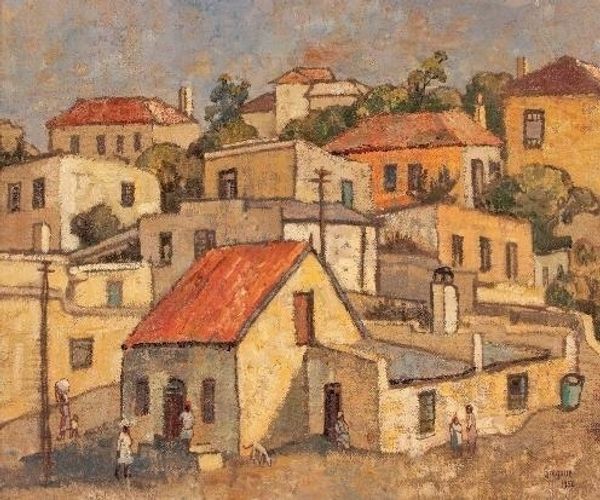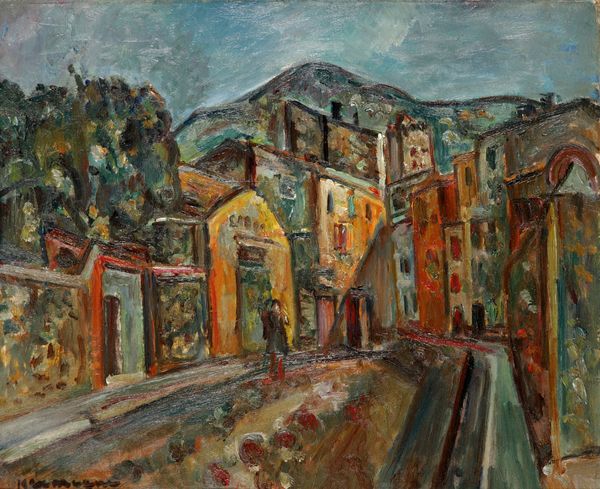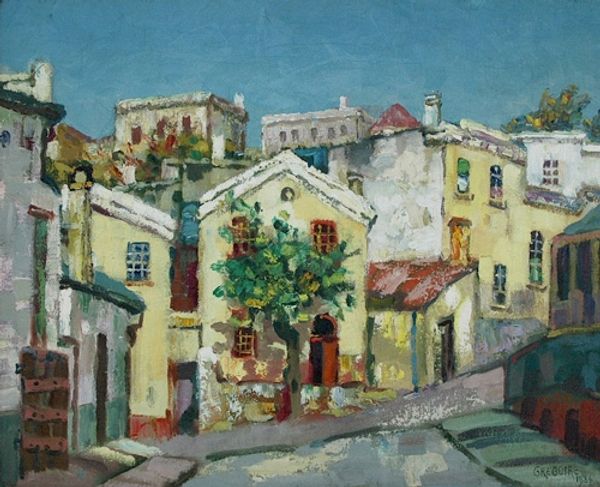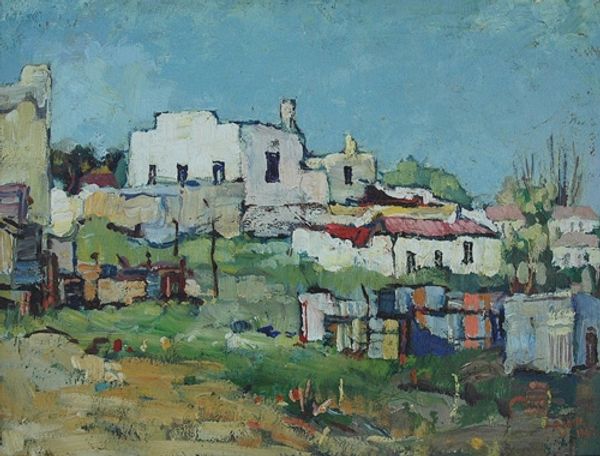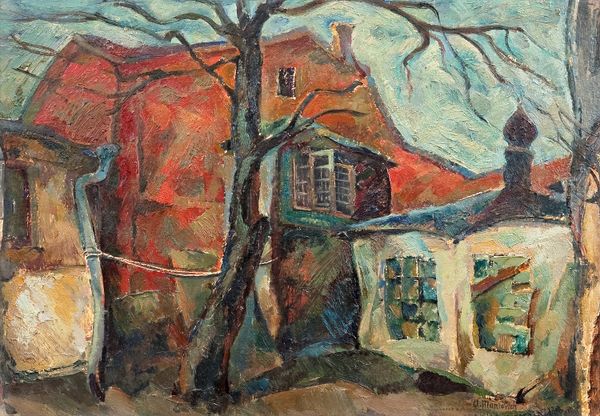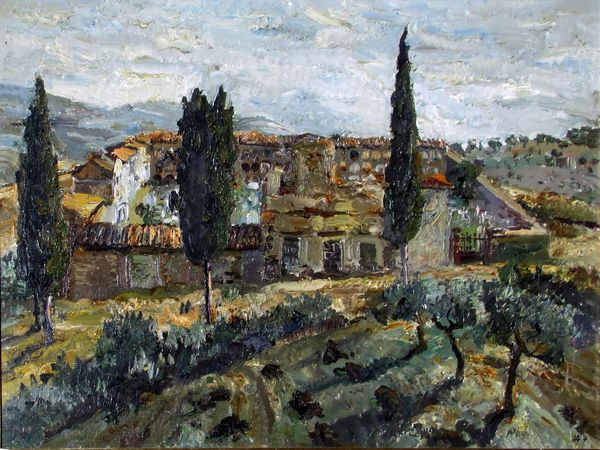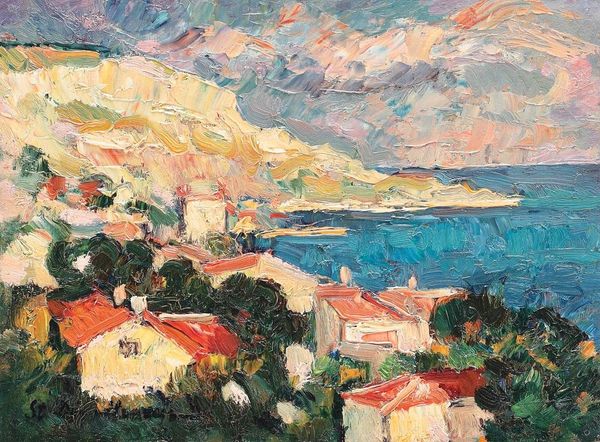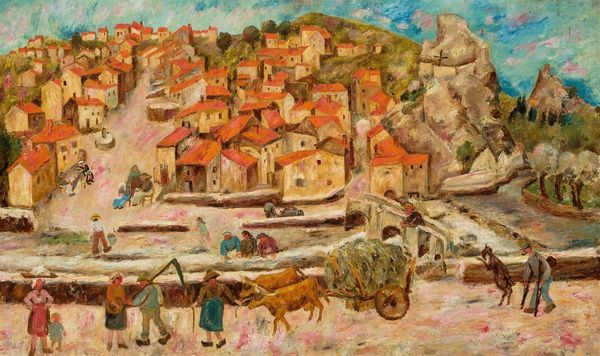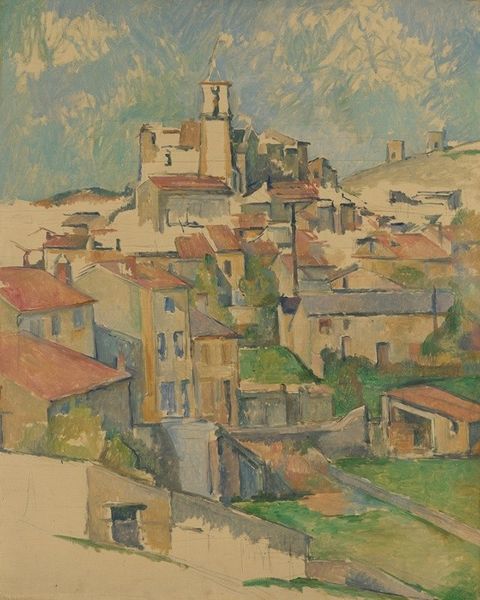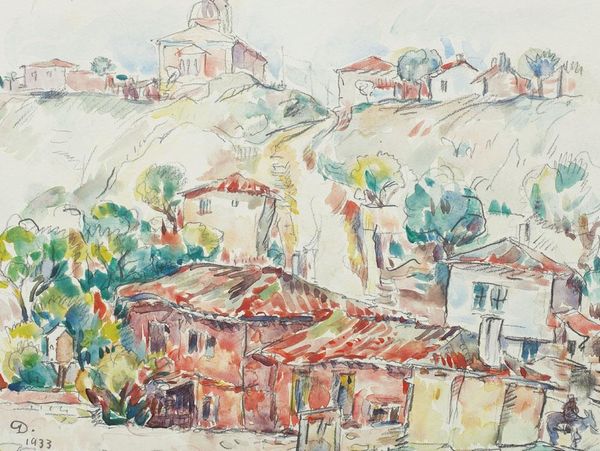
Copyright: Gregoire Boonzaier,Fair Use
Curator: Boonzaier’s 1951 oil painting, "Bo-Kaap," captures a vibrant cityscape nestled against a backdrop of the sea. The layered houses remind me of theatre sets, carefully stacked on top of each other and facing an audience. What do you think of it? Editor: The impasto application really strikes me—the paint itself seems to perform an essential role. Look at how he layers thick strokes to delineate the walls, creating a tangible sense of material density. I see the social reality embedded in those thick layers. Curator: Exactly. Bo-Kaap is a historic area in Cape Town with a distinct cultural identity, predominantly Muslim, with its origins in the freeing of enslaved people from the 17th and 18th centuries. The bright colors weren’t just decorative; they were a conscious act of reclaiming space and asserting identity in a historically marginalized community. The means of expression in such difficult contexts became acts of protest. Editor: Absolutely. These aren’t just aesthetic choices. Considering that Boonzaier painted this during the rise of Apartheid, the very act of depicting this neighborhood and its colorful defiance becomes significant. Each brushstroke, each textural choice emphasizes labor, presence, and resilience. These material choices defy any effort toward erasing their existence. Curator: Thinking of its contemporary legacy, Boonzaier’s "Bo-Kaap" challenges us to reflect on urban space and collective memory. As Bo-Kaap continues to face gentrification pressures today, how can this artwork remind us about art as resistance? Can these textures provide inspiration for activism? Editor: Indeed. Beyond the visual appeal, "Bo-Kaap" speaks volumes about production under duress. It exemplifies how marginalized communities have repurposed materials to express autonomy and endurance. This isn’t merely about representing place, but a testament of what it means to produce identity. Curator: I think you're right; considering both historical context and contemporary pressures provides a very complex and important analysis, showing us how to read artwork more clearly as activist tools. Editor: For sure; the layering, as a technique, echoes that of the lives lived, creating the sense of a tangible heritage to hold onto.
Comments
No comments
Be the first to comment and join the conversation on the ultimate creative platform.
